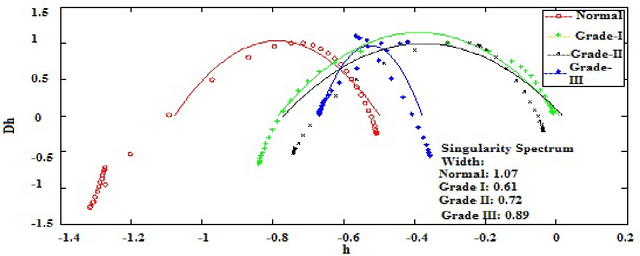Asima Pradhan
CerviFormer: A Pap-smear based cervical cancer classification method using cross attention and latent transformer
Mar 17, 2023Abstract:Purpose: Cervical cancer is one of the primary causes of death in women. It should be diagnosed early and treated according to the best medical advice, as with other diseases, to ensure that its effects are as minimal as possible. Pap smear images are one of the most constructive ways for identifying this type of cancer. This study proposes a cross-attention-based Transfomer approach for the reliable classification of cervical cancer in Pap smear images. Methods: In this study, we propose the CerviFormer -- a model that depends on the Transformers and thereby requires minimal architectural assumptions about the size of the input data. The model uses a cross-attention technique to repeatedly consolidate the input data into a compact latent Transformer module, which enables it to manage very large-scale inputs. We evaluated our model on two publicly available Pap smear datasets. Results: For 3-state classification on the Sipakmed data, the model achieved an accuracy of 93.70%. For 2-state classification on the Herlev data, the model achieved an accuracy of 94.57%. Conclusion: Experimental results on two publicly accessible datasets demonstrate that the proposed method achieves competitive results when compared to contemporary approaches. The proposed method brings forth a comprehensive classification model to detect cervical cancer in Pap smear images. This may aid medical professionals in providing better cervical cancer treatment, consequently, enhancing the overall effectiveness of the entire testing process.
Wavelet based approach for tissue fractal parameter measurement: Pre cancer detection
Mar 21, 2015

Abstract:In this paper, we have carried out the detail studies of pre-cancer by wavelet coherency and multifractal based detrended fluctuation analysis (MFDFA) on differential interference contrast (DIC) images of stromal region among different grades of pre-cancer tissues. Discrete wavelet transform (DWT) through Daubechies basis has been performed for identifying fluctuations over polynomial trends for clear characterization and differentiation of tissues. Wavelet coherence plots are performed for identifying the level of correlation in time scale plane between normal and various grades of DIC samples. Applying MFDFA on refractive index variations of cervical tissues, we have observed that the values of Hurst exponent (correlation) decreases from healthy (normal) to pre-cancer tissues. The width of singularity spectrum has a sudden degradation at grade-I in comparison of healthy (normal) tissue but later on it increases as cancer progresses from grade-II to grade-III.
 Add to Chrome
Add to Chrome Add to Firefox
Add to Firefox Add to Edge
Add to Edge